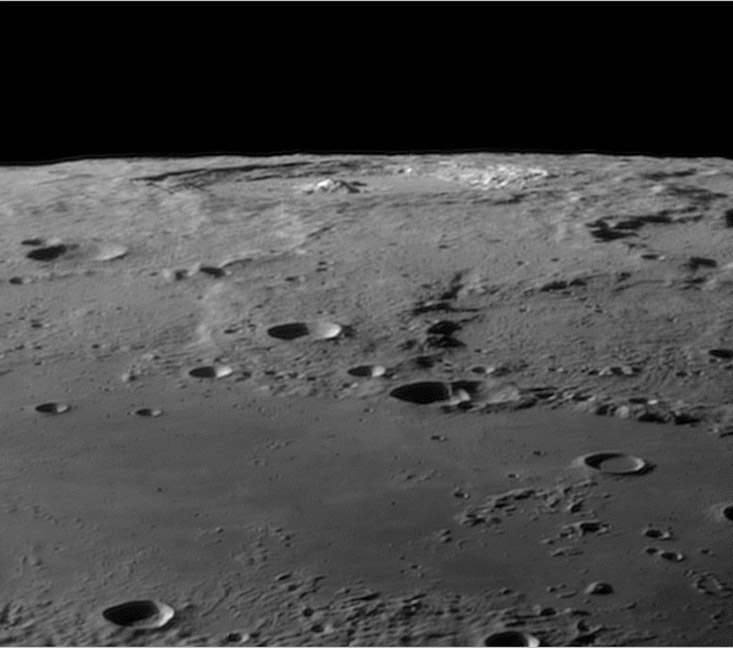
image by Oliver Pettenpaul
Oliver likes limb views and so do I. This oblique perspective of Pythagoras is unusual, for the 130 km wide crater is 27° in longitude from the mean limb and not usually seen so much on edge. We can see the central peak in profile - its a relatively steep-sided triangular mountain - fitting for Pythagoras! The brightness of one peak is probably due to it being at the right angle to effectively reflect sunlight, but perhaps is also partially because it contains anorthosite, the aluminum-rich, whitish rock of the lunar highlands. The floor of the crater looks quite flat, like the foreground Mare Frigoris. The little crater near the bottom of the opposite rim is on the northwest side of the crater, so we are looking approximately north of west. The shadow-casting scarp along the rim crest on the left side of the crater appears quite steep. I didn’t realize how flat the rim is below the scarp, and how it almost rolls over toward the floor. Near the middle of the image is Robinson - a crater with such a smooth rim that looks like it was turned on a lathe. And near the foreground is Horrebrow and its A, locked in an incestuous embrace. Oliver’s image illustrates that there is no bad time to look at the Moon, for even a very bad libration leads to a new view of old friends.
Chuck Wood
Technical Details:
Oct 5, 2007 05:18UT. Celestron C9.25″ + Meade #140 2x Barlow + Astronomik R filter + ImagingSource DMK21AF04.AS camera @ 15 fp. 700 frames stacked with 10x MAP processing.
Related Links:
Rükl plate 2
Oliver’s website
Yesterday's LPOD: Slithering and Sliding
Tomorrow's LPOD: First View with a New Scope
COMMENTS?
Register, Log in, and join in the comments.



